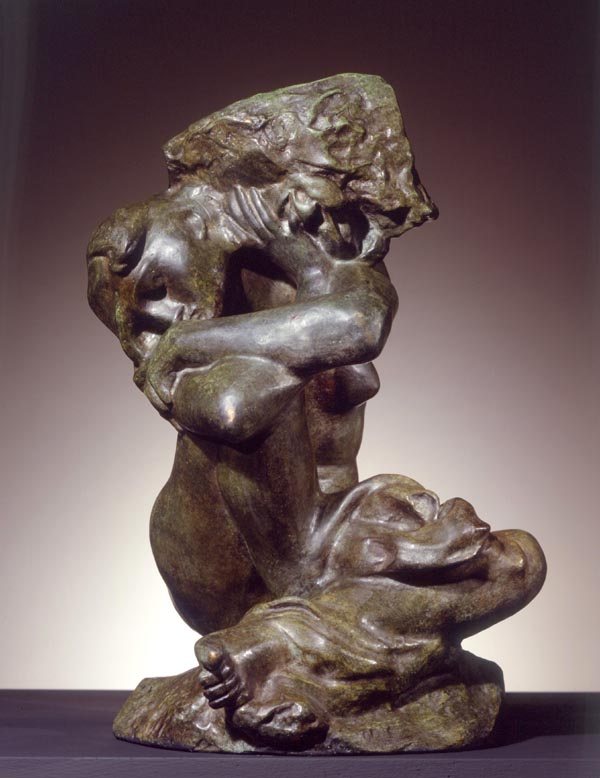 home
about
artists
exhibitions
press
contact
purchase
home
about
artists
exhibitions
press
contact
purchase |
|
AUGUSTE RODIN Fallen Caryatid Carrying Her Stone Bronze, 43 cm (16 7/8 inches), conceived in 1881-1882
A work of 1881-82, conceived in conjunction with his Dante-inspired drawings, Fallen Caryatid is an extremely compact form. The detailing is generalized, while the sense of the figure’s emergence from or sinking into the material has its source in Michelangelo’s Bound Slaves. Planned for a section of The Gates of Hell, Fallen Caryatid was treated by Rodin as an independent work as early as 1882. For the pose and finishing of the form, the artist employed his favourite model, the Italian peasant girl Adele Abruzzezzi. "It bears, as in a dream one bears the impossible and finds no deliverance," was Rainer Maria Rilke’s characterization of Fallen Caryatid in 1902.* The work is an assault on, and deconstruction of, a twenty-five-hundred-year-old Western tradition of the standing female figure as a graceful architectural element. In Brussels, Rodin had executed caryatids, and he knew very well the series that was among the most renowned works of Carrier-Belleuse. For Rodin, the building that Fallen Caryatid is supposed to support has collapsed, yet the women, half-crushed, must still bear the weight of the stone. * Rainer Maria Rilke, Rodin, trans. Robert Firmage (Salt Lake City, 1982), p. 46. |
